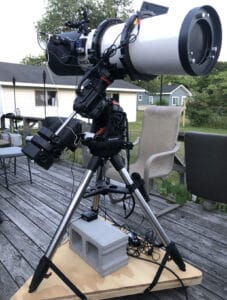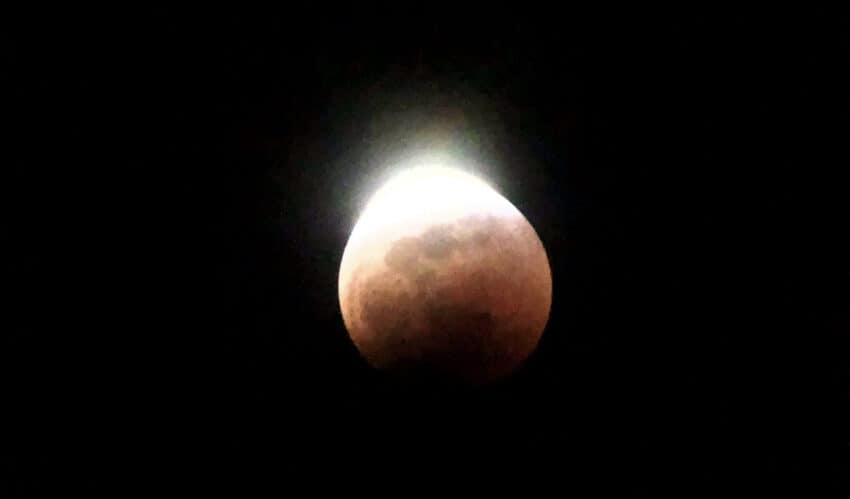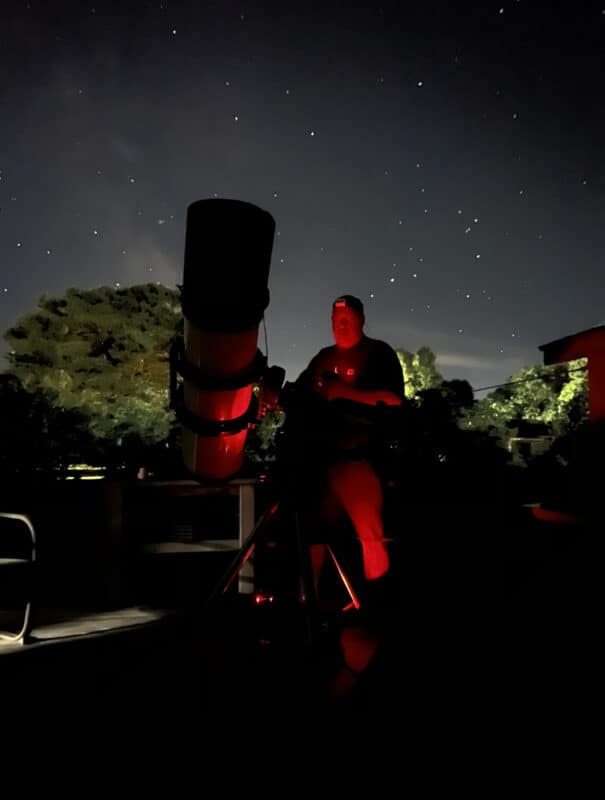Views of the November Total Lunar Eclipse from Charlevoix, Michigan
Being married to a guy who loves the dark sky makes skies like Tuesday’s early morning expanse even more enchanting.
Disclaimer: To be honest…I don’t even begin to understand the scientific logistics behind much of the magical final product.
However…I know that weather forecasts are watched with hopeful diligence. Cloud cover is carefully calculated. And, geometric angles and degrees are meticulously measured. And…I DO understand the loads of fun, and little bits of frustration, that I get to have with that magical final product, as well.
pre-game

First things first…Mike is a pretty quiet, unassuming, fly under the radar kind of guy. Therefore, getting to feature him along with his favorite hobby on my blog is also loads of fun!
On Monday morning, Mike got the twins off and going…meanwhile, as I slept off a horrible 3-day COVID vaccine reaction…he mastered the afternoon gig, as well.
The mild autumn evening was, admittedly, the perfect host as Mike excitedly got to work on the back deck. He rolled Big Bertha…of course, his telescope has a name…out of her home…and of course, she also has her own “house”…and he completed the final tweaking of the settings for the proper collimation of his scope for his location and intended target. He then shined up all of his lenses to squeaky, fingerprint-free precision. Followed by, double-checking all of his dark-sky-friendly equipment…most certainly…including the coffee maker. Shortly after, Mike sent himself to bed. An early night…clearly hoping for some quality zzzzzz’s before his equally early Tuesday morning wake-up call.
bortle who
Disclaimer #2: (Interesting?) Astronomy geekery ahead.
And, yet…admittedly helpful Astronomy geekery that offers insight into some of the geographic challenges.
Other hobby and amateur astronomers may know that dark skies have different Bortle ratings. The Bortle Scale is a way of measuring…utilizing astronomical observations…the quality, or brightness, of the night sky for a particular location. It is important to keep in mind that a Bortle value represents the potential of a particular location, not definitively what it will be when you visit. Undoubtedly, local and meteorologic factors such as dust, smoke, haze, humidity, clouds, or atmospheric turbulence can diminish the Bortle value on any given night.
That being said, there are 9 levels to the Bortle scale with Class 9 signifying a location with the most extreme amount of light pollution. A Bortle Class 1 is, without question, the most desirable and, as you can deduce, most (but not all!) Class 1 locations in the United States are situated in the western portion of the nation.
So, to give a layman’s perspective, our home…within the city limits of Charlevoix…is a high-Bortle 4. Relatably, for those who may have visited the Headlands International Dark Sky Park and have your experience there for reference…the Park is a high-Bortle 3/low-Bortle 4. On a side-note…if you have not experienced the incredible Headlands before, it is highly-recommended by the LouCrew that you add it to your must-see list!
Click here to see a list of Bortle Class 1 locations in the United States
totality
Mike’s alarm chimed around 3:15 am EST on Tuesday morning. I think I heard a one-time reprieve from the snooze button, but…even so…he was quickly up and going. With a steamy tumbler of coffee…black, no sugar…at his side, he started capturing images at 3:51 am EST. He observed, and awed, and snapped away. And then, somewhat abruptly, at 5:07 am EST…he captured his final image of the morning.
In typical fashion, as they generally do, Tuesday morning’s lunar eclipse unfolded slowly.
4:09 am EST marked the moment the Earth’s shadow took its first bite, visible by the naked eye, of the moon…signaling the start of a partial eclipse. As the darkness slowly danced its way across the lunar body, Earth’s umbra…the darker, central part of Earth’s shadow…succeeded in completely blanketing the moon. Totality achieved. It was 5:16 am EST.
Totality, the time during which the moon is completely engulfed in the shadow of the Earth, lasted 86 minutes, until precisely 6:42 am EST. This marked what is known as the maximum eclipse with a timestamp of 5:59 am EST. At this moment…the orbs were flawlessly aligned and, together, they choreographed a spectacular show of fiery reds, brilliant oranges and tremendous yellows.
NASA eloquently describes the moment of maximum eclipse with these words…
“it’s as if ALL the world’s sunrises and sunsets are projected onto the moon.”
At 6:42 am EST, as Earth’s umbra started moving away from the moon’s surface, the final stages of Tuesday’s total lunar eclipse played out. The powerful shadow of our magnificent planet released the moon from its grip and at 7:40 am EST, free from cover and completely exposed, the moon set.
seventy-six minutes
Comparing Mike’s photographic timeline to the timeline of the greater Universe…you may become aware of two maddening yet, humanly unmanageable, realities of dark-sky observers world-wide.
Clouds and axial rotation.
The clouds drifted in and out throughout the early morning eclipse, but seemed to settle in for a good, thick nap about 9 minutes…nine minutes…before totality began. By the time the clouds began to disperse, dissipate, and eventually disappear…and Mike could have potentially grabbed some additional shots as totality waned…the moon was too low on the horizon for favorable viewing from his vantage point on the back deck. And yet, the photos he snapped in those 76 mystical minutes between 3:51 and 5:07…UNFORGETTABLE!
my guy

When Mike texted the photos to the kids and me Tuesday morning, he told us that he wished he could have captured more. However, gravity reigned and it was simply too heavy as he tried to use his “nerd powers” to raise the moon back up.
And yet, somehow…despite the immeasurable heft and the fantastical improbability…this guy seems to hang the moon, and the stars, for this crazy crew each and every night.
total lunar eclipse | 11.08.22 | charlevoix.michigan




Thanks, Mike. My eyes don’t open until the daylight hits them. 😶